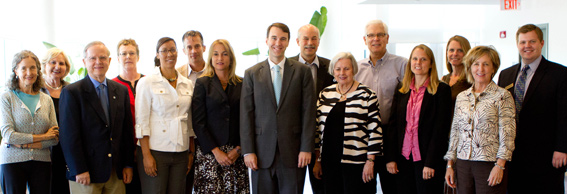In the past few years, a number of different empirical studies have come out highlighting how well women are represented in leadership across a variety of sectors (for example, the 2009 White House Project Report: Benchmarking Women’s Leadership and the 2013 follow-up Benchmarking Women’s Leadership report from Colorado Women’s College). These studies look at a plethora of fields to assess how well women are represented in the highest levels of leadership across sectors. While these studies are quite impressive in their scope, there is little attention to the ways that religion matters. As the 2009 report notes,
Gauging the current status and progress of women in religious leadership is more difficult than in any other business and professional sector studied in this report. With such a multitude of faiths, little or no universality in definitions of leadership, and a marked absence of data to work with, analyzing women’s leadership in religion presents a significant challenge. during the preparation of this report, it was immediately clear that there is a dire need for increased and standardized data collection on the status of women in this field. While historical information is available, there is a dearth of hard numbers.
Since the fall of 2012, I have been involved with a mixed methods, multi-stage research project investigating women in leadership within evangelical organizations. This study is one of the first to study women in leadership in religious settings outside the church. As has been well-documented, the non-profit sector is filled with many religious organizations. Our study is comprised of 1500 organizations. This list is largely made up of members of the Evangelical Council for Financial Accountability, alongside those who are a part of the Coalition of Council for Christian Colleges and Universities, the Accord Network, and the Christian Community Development Association. Although the study is on-going, I wanted to post some of the results that we have so far, as the first phase of data collection has been completed.
Supported by the Imago Dei Fund (under the leadership of Emily Nielson Jones), Dr. Janel Curry (Provost, Gordon College) and I serve as the co-PIs for this project; Neil Carlson and the Center for Social Research at Calvin College have been responsible for collecting most of the data. Although there will be an official presentation and release of the data at the Religious Newswriters Association Conference this coming September, the results from our first phase of the study are now available (thanks to the team at CSR for the tableau interactive below!)
A few key findings (more information is also available at the study’s website):
1. Evangelicals have fewer women in leadership than secular counterparts. While this is not surprising, it is important to address. This isn’t just about the people in top leadership positions — this is about those who are the top paid leaders, and it’s true about the board. Of our sample of 1500 organizations, 1300 have complete data regarding their paid leaders and board members who have list paid leaders and boards on tax-forms, 16% of the top leaders, 21% of the board, and 23% of the highest paid employees/leaders are female. Compare this to the non-profit world more generally, where women make up 43% of the board and 40% of CEOS (Benchmarking Womens Leadership, 2013).
2. Our lack of gender diversity in leadership is tied to a lack of racial diversity. Among women who do serve on boards and in top leadership positions, white women are over-represented. Again, this is not surprising. But we also notice that religious institutions (as noted in their own reports and strategic plans) may often treat a lack of racial and gender diversity as very separate. They are not.
3. Although we often discuss how bad evangelical institutions do at having men and women serving and leading alongside one another, one of the most interesting results for me has been the variation within evangelical institutions. Scholars of religion know that orthodox faiths are often painted with broad brush strokes, and assumed to be bad for women. For example, nearly a quarter of the organizations (24%) have no women serving on their boards, while a slightly smaller percentage (17%) have at least 40% women on their boards. Some denominations seem to do especially well at promoting both men and women into all positions, while others do not. One of the ultimate goals of the study is to uncover what factors predict more shared leadership among men and women, and the ways institutions foster more positive gender climates.
















